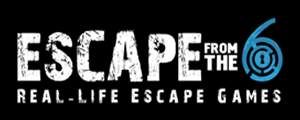If you have ever participated in an escape room challenge before, you know that they are fun, exciting, challenging, team enhancing, and at times frustrating all rolled into one adventure. At the heart of every escape room are the puzzles that must be solved before you can move onto the next clue and challenge.
All escape rooms are different, they have different themes, stories, layouts, and puzzles. Here we take a look at the most common escape room puzzles you a likely to encounter during your next escape room adventure!
 1. Text & Numbers
1. Text & Numbers
The most common escape room challenges revolve around needing to solve a puzzle made up of text or numbers. These include, math equations, fill in the blank, complete the pattern, or complete words and phrases. The completed puzzles tend to offer a clue you can use to move on to your next challenge.
2. Physical Puzzles
These puzzles require physical actions or movements to complete a challenge or to uncover a clue. These can take the form of moving an object, untying a knot, finding a missing piece and so much more. The complexity of the room will dictate the complexity of the physical challenges.
3. Sound & Light
You may not notice it at first, but both sound and light tend to play a big role in many escape room challenges. Make sure you listen attentively to any background sounds, as it can lead you to a clue or be a clue itself. Lights may also shine differently on a hint, or try and mask a clue in the shadows. You never know what clues can be uncovered by paying attention to any sounds and changes in lighting.
4. Hidden Items
Almost every escape room has hidden objects that are needed to move on in the challenge. Looking through books, behind boxes, and anywhere else clues can be hidden may reveal your next clue, a solution to a puzzle, or perhaps a key to a locked door. In fact, many escape rooms have a hidden object or hint as you enter the room that can help expedite the completion of the challenge, but it is often missed as players are not looking for or are not aware of the significance of the hidden item.
5. Visual Design
Escape rooms have excellent designs and intricate setups. Their powerful visual appeal always provides you with some form of visual stimulus. However, those visuals can turn out to be important clues for solving puzzles. There might be clues written on walls, hidden within pictures on a desk, or objects strategically placed out of sight.
6. Logic-Based Puzzles
Utilizing all of the information you have gathered throughout an escape room challenge as you take on a new puzzle will normally prove beneficial. There are plenty of obvious answers, repeated themes, and even familiar mysterious symbols utilized previously that can assist with the current challenge.
7. Combinations
Almost every escape room utilizes some form of a combination based puzzle at some point in the challenge. The correct combination may open a box, reveal a hidden room, provide access to a clue, or trigger any one of the hundreds of potential outcomes of entering the correct or in some cases the incorrect combination.
There are plenty of escape room puzzles you might stumble upon, just remember if you get stuck, chances are the answer is simpler or more apparent than you think.
Have fun and good luck!
